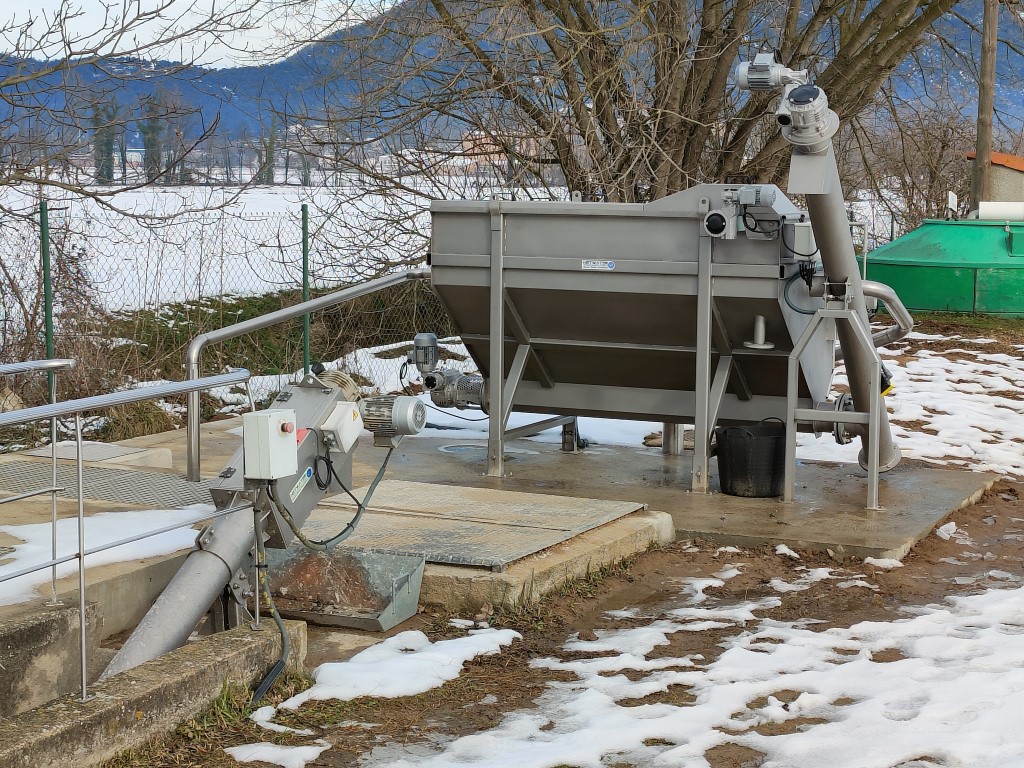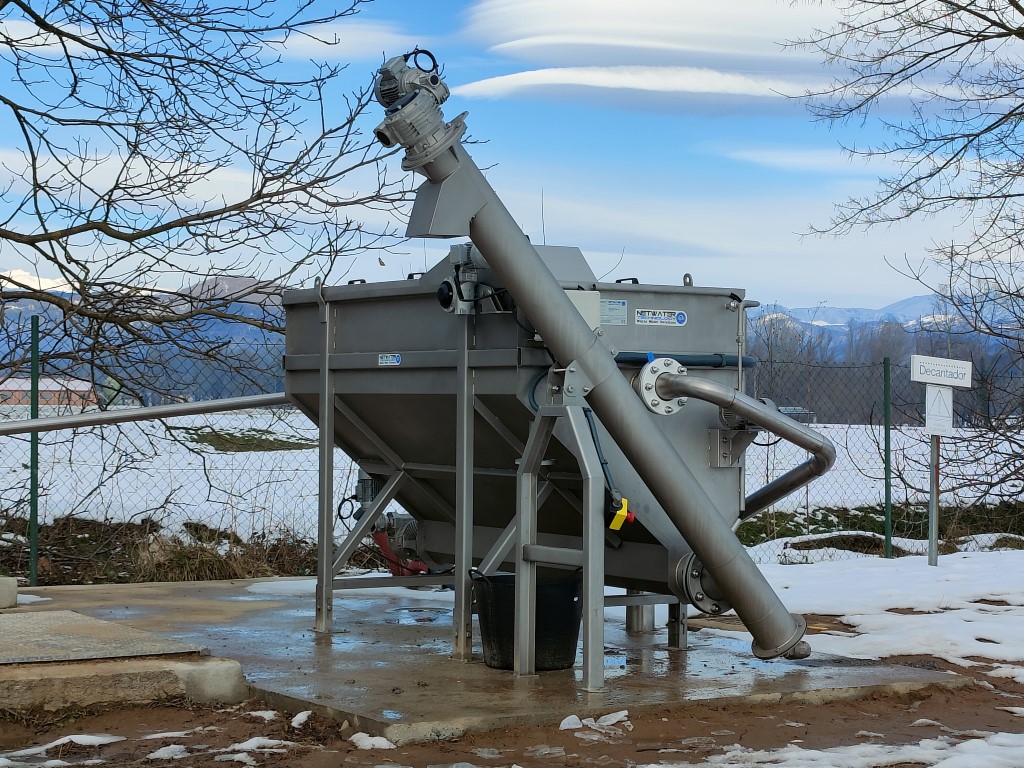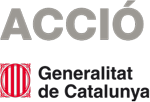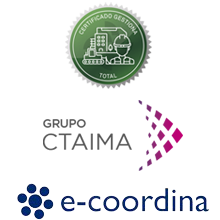Compact pre-treatment plant for wastewater with a capacity for flows up to 600m3/h. (For larger flows please consult with our technical department.
Compact, simple and efficient design.
Tank height regulation (we simplify the tube connection process)
Efficient filtering system (perforated or triangular profile).
Grit extraction system with aeration (optional without aeration).
Grease extraction system.
Water level regulation by means of adjustable weir.
Aeration system by means of diffusors.
Lids which cover 100% of the upper area to avoid odour.
“Low cost” in civil Works construction.
DESIGN & APPLICATION:
Mechanical and physical pre-treatment is one of the most important processes in a WWTP due to the fact that the posterior efficiency and overall output is directly affected by this stage and for this reason, we have developed our UnivTech®Nw100, incorporating all processes in one with innovated and improved elements compared with conventional equipment. We offer machinery which has mechanical systems integrated, which reduces power consumption along with operational and maintenance time and that way we can avoid long periods of time where the equipment is inactive. We also avoid poor efficiency or the risk of breakdowns in the next processes which could occur due to solids not having been eliminated correctly.
In pre-treatment we can also receive all types of oil and grease which need to be extracted and separated efficiently. If this process is not carried out correctly the grease can cause many problems in the decanters where a layer is created on the surface. This layer makes sedimentation difficult as it attracts to the surface all small particles of organic material. As for purifying active sludge it can also create a problem in the correct aeration, reducing the transfer coefficient to 55-70% as the grease increases from 0 to 70mg/l. The grease also takes part in the production of BULKING, altering the sludge digestion process, the COD increases from 20% to 30% due to the amount of grease in the waste.
It’s now very clear to understand the importance of an efficient mechanical and physical pre-treatment and our recommendation is summed up in the following diagram:
Our main mission is to separate, by means of mechanical processes (fine screening), or physical processes (endless screw grit extractor or grease concentrator), the largest amount of solid waste and residue from the wastewater, for example, oil, grease, grit, plastic, branches, paper, small stones etc…) which can create the following problems in the next stage of treatment:
- Wear and tear of equipment due to the abrasive effect of the sand/grit.
- Caking on the anaerobic digesters because the scum has not been properly eliminated.
- Grit accumulation at the bottom of the anaerobic digesters.
- Less efficiency in the biological process due to excess grease particles on entrance.
For these processes we have designed our UnivTech®Nw100, including the following elements
- Our fine screen and waste compacting ArqTech®Nw51, for small and medium sized flow, with meshes of Ø3 a Ø6mm with perforated section, and 0.5mm to 6mm with triangular profile.
- Our fine screen and waste compacting ArqTech®Nw55 for large flows with meshes of Ø3 to Ø6mm with perforated section, and 0.5mm to 6mm with triangular profile.
- Grit removal and separation.
- Aeration system.
- Grease and oil removal and separation.
- All the components which are indirect contact with (except the endless screws) are manufactured in different qualities of stainless steel according to PREN Corrosion (Pitting Resistance Equivalent Number) and according to our client’s requests. Once manufacturing is concluded we apply a pickling process by means of an acid bath. The endless screw can be manufactured in Carbon Steel ST.52 (UNE F-1515) or in Stainless Steel, AISI-304/316.
In this piece of equipment, 6 processes are carried out:
Process 1: The water comes in through the entrance tube in the metallic tank where we can find installed our ArqTech®Nw51&55 installed. The fine solids are retained, transported, compacted and expelled and then the liquid goes through the filtering grid and falls into the metallic tank.
Process 2: The water is settled and the grit decanting process and grease emulsion begins. We recommend ≥ 5 minutes so that this process can be effective. This parameter is of utmost importance in order to gain the optimum output in the WWTP and this is why we carefully calculate our equipment’s capacity for each individual project.
Process 3: The aeration system is continuously working and on one of the ends of our equipment we install a 1” air supply feeding connection so the client may inject air from the existing blowers on the plant for the rest of the processes. This way we can reduce odour, give a constant output which permits us to modify flow without losing efficiency, very low head loss and we supply the necessary air flow in order to achieve cleaner grit with very low organic content.
Process 4: Once retaining time has finished, we proceed to the sand extraction process. The equipment has 2 endless screws. The horizontal one moves the grit to the accumulation point and here we can find the inclined screw which, in turn, collects the grit deposited in the horizontal screw, lifts it and discharges it on to a discharge guiding ramp.
Process 5: The grease extraction system, removes the grease and/or oil from the surface and with the help of air insufflation to demulsify, these grease bubbles rise to the surface at a speed of approximately 3 & 4 mm/s.
Process 6: The clarified water leaves through an adjustable weir where we can find the deposit’s exit tubes.
N.B. When we join together the processes of de-gritting and de-greasing in the same area or tank, a calming area is created where the grease accumulates on the surface and is then removed by a surface sweeping system. Under these conditions the de-gritting/de-greasing design parameters would be as follows:
| PARAMETERS | VALUES | |
| Interval | Value | |
| Hydraulic load | <35 m3/m2/hour (at Qmax) | |
| Retaining time | 5 – 10 min (at Qmed) | |
| Supply aire flow | 0,5 to 2 m3/h for m3 of de-greasing capacity | |
Our equipment has a safety or protection system integrated in all the inspection lids, which is of utmost importance to be able to fulfil standards 2006/42/CE from European Parliament and the Consejo de 17 de mayo de 2006, relativa a las máquinas y por la que se modifica la Directiva 95/16/CE, establishes that all members of the European Union are obliged to adopt standards in order to ensure technical safety for the machinery.
A safety element is OPTIONAL but we recommend our clients to incorporate this type of electronic device in the control panel for the torque control of the electric engine of our ArqTech®Nw51&55 and we can supply on demand. This way we can control various parameters and this device can be triggered off when abnormal activity is detected in the process and therefore we can avoid any further problems if the case of a blockage.










